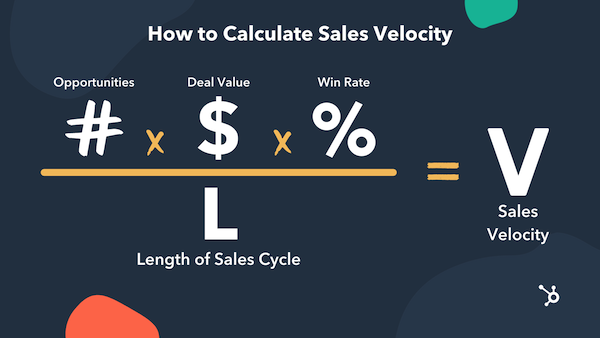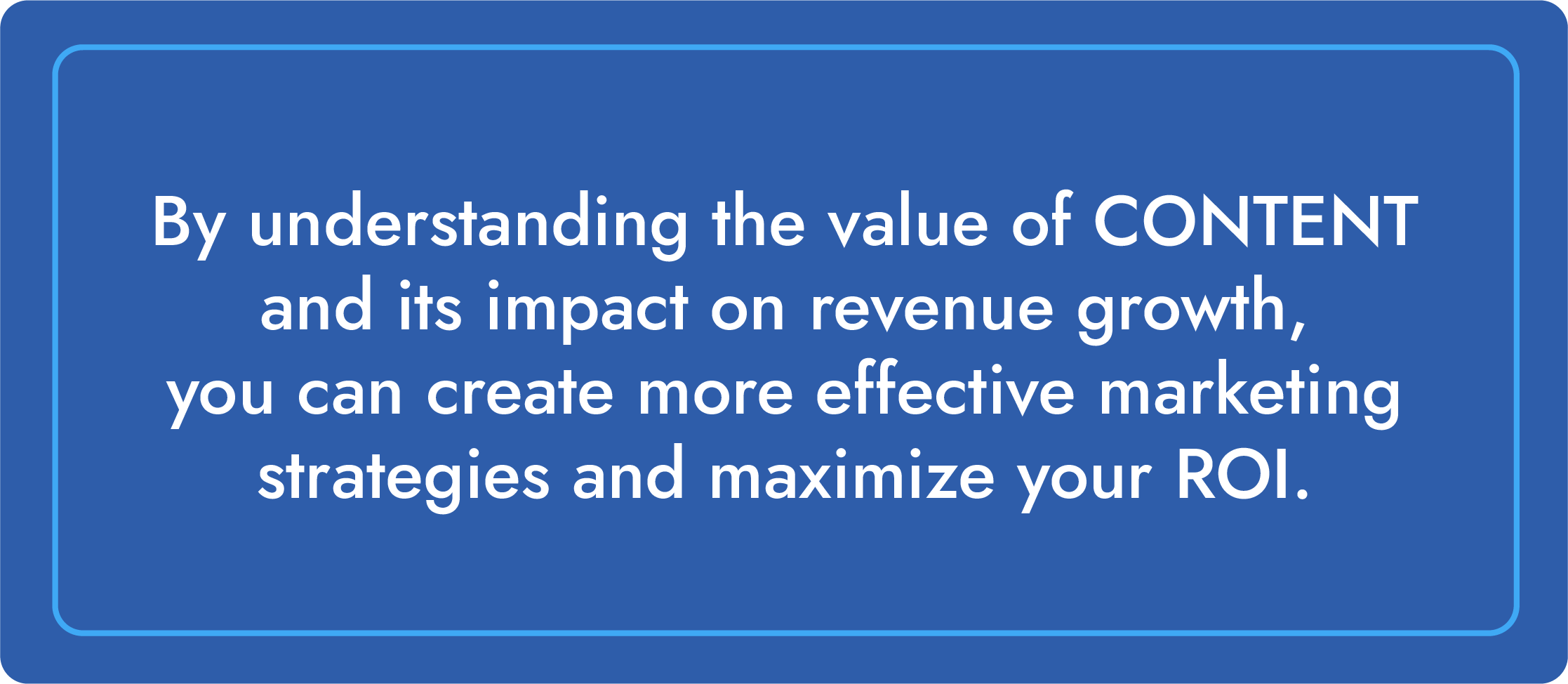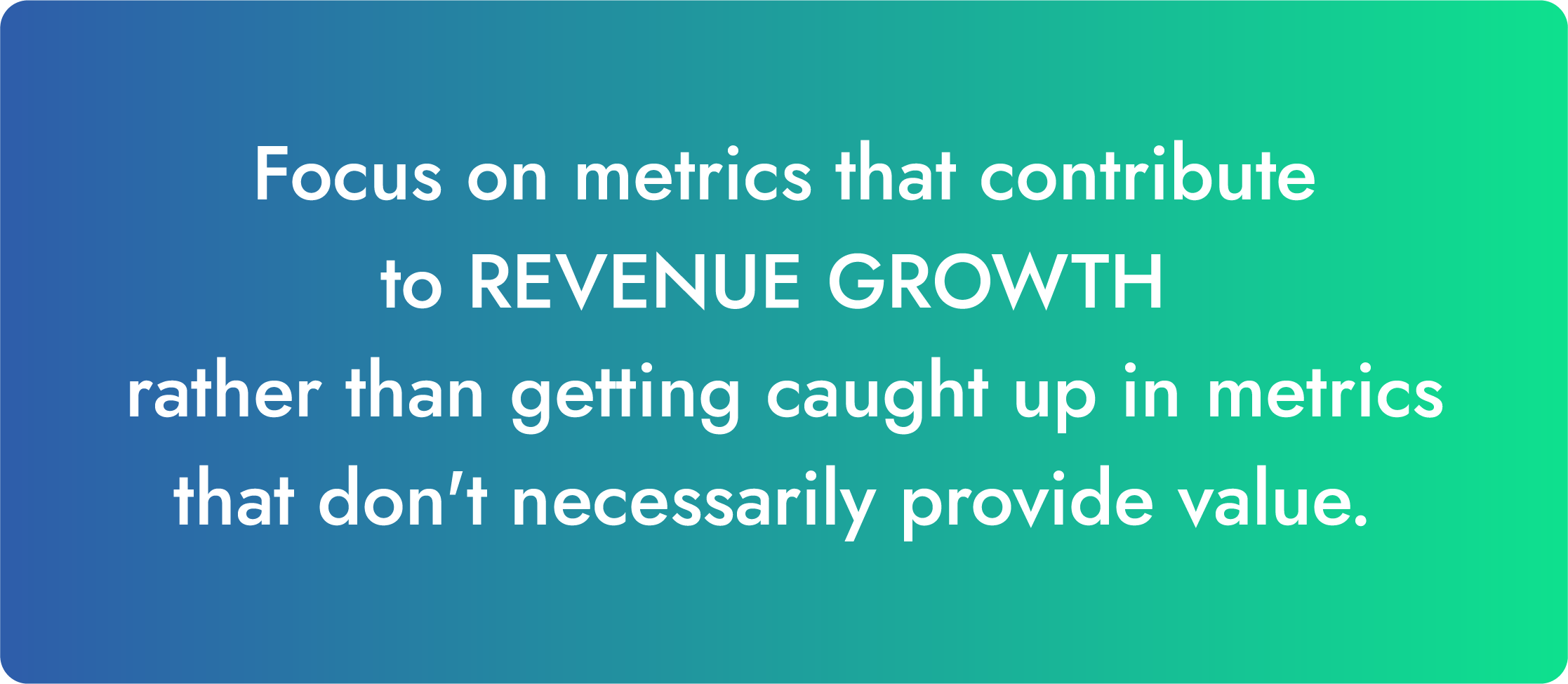Share this
How Roofing Companies Can Tie Content to Revenue Growth
by Eliza Spain on May 17, 2023

Measuring the success of inbound marketing is critical for roofing businesses looking to grow and increase revenue. However, focusing solely on website traffic as a metric can be misleading.
According to recent statistics, among the businesses that reported achieving significant success in content marketing, 70% indicated that they measure the return on investment (ROI) of their content marketing efforts, regardless of their size.
However, the survey revealed that only 54% of all businesses incorporate this practice. And 61% of respondents believe they are at least above average at measuring their ROI. (Source)
Most roofing businesses believe they are accurately measuring their ROI, and if you have not yet started measuring it, 2023 is the year to start.
Businesses are diversifying their ROI efforts among content marketing, ad spending, and organic social channels. Measuring performance goes hand in hand with your intentions for your content.
These findings indicate that a comprehensive approach to measuring ROI can aid in making better decisions regarding where to allocate your spending. It's probable that your competitors will also concentrate on these aspects.
So what metrics should you focus on? What metrics don't matter in the long term? Let's find out...
Why Focusing Solely on Website Traffic is Not Enough
Website traffic is a “vanity metric,” providing superficial information and doesn't help us understand actual performance. Instead, focus on revenue-related metrics to determine the effectiveness of marketing campaigns.
Revenue-related metrics provide a clear picture of the ROI of a marketing campaign. By comparing the revenue generated that can be attributed to the campaign to the cost, roofing businesses can determine whether the campaign is profitable.
This information helps roofing businesses decide where to allocate their marketing budget and which campaigns to run. These metrics also help identify which marketing channels are generating the most revenue.
By analyzing revenue data across different marketing channels, roofing businesses can:
- Determine which channels are the most effective at generating revenue
- Adjust their marketing strategy accordingly
- Optimize their marketing campaigns and maximize their ROI
Throughout this article, we will discuss which metrics you can measure (and matter), the metrics you can measure (and don't matter), and which metrics you can't measure (and that's okay).
Measuring Content Value and ROI
Identifying which content is closing deals and being used in the sales process allows you to focus on creating content that supports the buying journey and is directly tied to helping customers make purchasing decisions.
By comparing the performance of different pieces of content on the site and looking at quarter-over-quarter traffic, roofing businesses can see which content is most effective in driving revenue based on what content is helping to close deals.
Measuring content marketing efforts' value and ROI is also essential.
By tracking the cost of content production and distribution and comparing it to the revenue generated, businesses can determine which pieces of content are the most cost-effective in driving revenue growth.
Businesses should also measure the opportunities created and nurtured through content marketing efforts. This includes tracking the number of good-fit opportunities, ideal customer profile (ICP) matches, and expressed interests.
It's also essential to highlight the people on the team creating content, including subject matter experts (SMEs) who contribute topic ideas and answer buyers' questions in a helpful and valuable way. This will help create an internal culture of content where sales, marketing, and customer service teams can see the value of helpful content.
By leveraging the expertise of these individuals, businesses can build trust and credibility with potential customers, which can translate into increased revenue.
To tie content marketing to revenue growth, businesses must track critical metrics.
So, what key revenue-related metrics should roofing businesses focus on to drive revenue growth? Let's take a look.
Metrics You Can Measure (and Matter)
To tie content marketing to revenue growth, it's essential to understand which pieces of content are helping to close deals and contribute to the sales process.
By tracking what content was sent to prospects during the sales process and what website pages they viewed, businesses can gain insights into what content supports the buyer's journey and help prospects make purchasing decisions. This can be done using tools like HubSpot or Google Analytics.
Additionally, understanding what content is used to create and nurture the most opportunities can help businesses focus on creating content that moves the needle on crucial pipeline velocity metrics.
Businesses should focus on the components of pipeline velocity as a northstar metric to measure revenue growth. This metric tracks how quickly opportunities move through the sales pipeline, from lead to close.
There are four main metrics to determine your roofing business's sales pipeline velocity and show how much revenue you can generate over a certain period:
- Number of qualified opportunities: The total number of prospects who have shown interest in your product or service and meet your predefined criteria of a good fit.
- Win rate: The percentage of qualified opportunities that ultimately convert into paying customers.
- Sales cycle length: The amount of time it takes for a qualified opportunity to become a paying customer.
- Average deal size: The average amount of revenue generated per sale.
In case you need a quick reminder, here is the Sales Pipeline Velocity Equation:

(Source)
Pipeline velocity metrics can help you identify which content contributes to revenue growth. By focusing on one aspect of the equation at a time, such as increasing the win rate, you can understand what content is helping to move the needle on that metric.
For instance, you need to convert more opportunities into closed sales to improve your win rate. To achieve this, you need to identify the content that is helping to move prospects further down the sales funnel, ultimately leading to closed sales.

Tracking and analyzing content can optimize your content strategy to focus on what's working best to drive revenue growth.
Metrics That Can be Measured but Don't Matter
Several metrics don't necessarily matter when it comes to ROI, despite being commonly used to measure the success of marketing campaigns.
While seeing high numbers of website traffic can be impressive, it doesn't necessarily indicate that the traffic is coming from the right audience or is leading to conversions.
Attracting visitors to your website is crucial, but not all visitors will be high-quality. Focusing solely on website traffic as a measure of success can lead to a high volume of low-value leads, wasting time and resources.
Similarly, focusing on the number of leads generated can be a "low-value" metric if the leads aren't qualified or unlikely to convert into paying customers.
It's essential to focus on the quality of leads generated, such as those who have expressed a genuine interest in your product or service and are more likely to convert into paying customers.
Low-value leads are those prospects that are not a good fit for your business or are unlikely to convert into paying customers. These leads may be individuals who are simply browsing your website, or they may be looking for something your business does not offer.
Focusing on metrics directly tied to revenue growth, such as number of qualified opportunities, win rates, sales cycle length, and average deal size, is essential.
Roofing businesses should focus on attracting qualified opportunities likely to become paying customers. This can be achieved by targeting specific audience segments, creating relevant content that speaks to their needs, and using targeted advertising campaigns.
To determine whether a lead is a high or low value, businesses should consider factors such as:
- Level of engagement with the business
- Likelihood to convert
- Fit with the business's ideal customer profile
By focusing on high-value opportunities, businesses can increase their chances of converting opportunities into customers, ultimately driving revenue growth.

By measuring and analyzing the right metrics, you can make informed decisions about your content marketing strategy and drive tangible business results.
Metrics You Can’t Measure (and That’s Okay)
It can be challenging to measure the value of a view on your website or social media because it often takes a lot of work to attribute a specific action or conversion directly to that view.
One example of tracking difficulties in digital marketing is when someone sees your post on social media and visits your website later or when someone visits your website and makes a purchase later.
Still, it's challenging to attribute those actions back to their source, and even though measuring the exact value of each view is hard, it's still essential to create a solid online presence through your website and social media accounts.
These platforms allow you to showcase your brand and connect with potential customers, increasing brand awareness.
You may not be able to measure the exact value of each view. The fact that people are interested enough to visit your website or engage with your social media content is a good sign that they are potential customers.
If they are genuinely interested, they may reach out to you in the future, and by having an online presence, you increase the likelihood that they will remember your brand and think of you when they're ready to make a purchase.
Although it may be frustrating not to have precise metrics for every view, the emphasis should be on producing high-quality content and establishing a robust online presence.
It's noteworthy to recognize that if prospects are genuinely intrigued, they will contact you.
Final Thoughts
Tying content marketing to revenue growth is crucial for roofing businesses to achieve sustainable success in today's digital landscape.
By creating quality content that aligns with the interests and needs of their target audience, companies can attract potential customers and build trust in their brand.
Tracking the right metrics, optimizing the sales funnel, and nurturing opportunities through personalized content is essential to leveraging content marketing for revenue growth.
With a solid content marketing strategy, businesses in the roofing industry can generate high-quality opportunities, close more deals, and ultimately achieve revenue goals.
Have questions?
Interested in ways you can successfully tie content marketing to revenue growth? Or have questions in general about ways you can improve your inbound marketing efforts?
Reach out and schedule some time to talk with an advisor today!

No Comments Yet
Let us know what you think